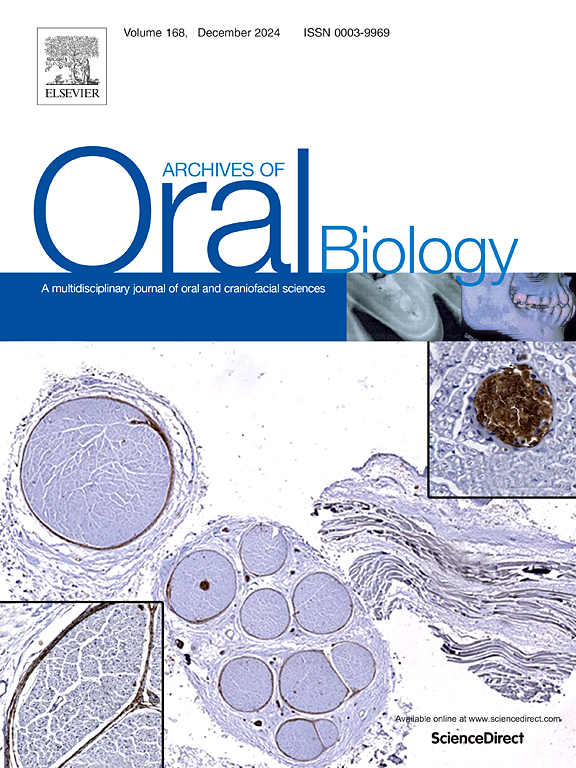Exploring the causal relationship between chronic pain and temporomandibular disorders: A two-sample Mendelian randomization study
IF 2.2
4区 医学
Q2 DENTISTRY, ORAL SURGERY & MEDICINE
引用次数: 0
Abstract
Objectives
This study investigates the causal effects of chronic pain on temporomandibular disorders using two-sample Mendelian randomization analysis.
Design
Two-sample bidirectional Mendelian randomization analysis was adopted to systematically explore the causal relationship between temporomandibular disorders and 7 types of chronic pain, including headache, hip, neck/shoulder, stomach/abdominal, back, knee, and facial chronic pain. Genetic variants from genome-wide association studies data served as instrumental variables. Inverse variance weighted, weighted median, and Mendelian randomization-Egger regression were applied, with sensitivity analyses to ensure robustness. And p < 0.05 indicated statistical significance.
Results
Mendelian randomization analyses revealed a significant causal effect of neck or shoulder pain on the risk of temporomandibular disorders, with an Odds ratio of 6.317 (95 % CI: 1.730–23.062, p = 5.30E-3). Additionally, a reverse causal effect was observed where temporomandibular disorders may increase the risk of back pain, with an Odds ratio of 1.008 (95 % CI: 1.002–1.013, p = 8.40E-03). No significant causal relationships were found between other types of chronic pain (headache, hip pain, stomach or abdominal pain, facial pain, or knee pain) and temporomandibular disorders.
Conclusions
This study provides compelling evidence for the causal relationships between specific chronic pain conditions (neck or shoulder pain) and the risk of temporomandibular disorders. These insights highlight the importance of an integrated approach to patient care and emphasize the need for further research into the biological mechanisms underlying these relationships to guide the development of targeted preventive and treatment strategies.
求助全文
约1分钟内获得全文
求助全文
来源期刊

Archives of oral biology
医学-牙科与口腔外科
CiteScore
5.10
自引率
3.30%
发文量
177
审稿时长
26 days
期刊介绍:
Archives of Oral Biology is an international journal which aims to publish papers of the highest scientific quality in the oral and craniofacial sciences. The journal is particularly interested in research which advances knowledge in the mechanisms of craniofacial development and disease, including:
Cell and molecular biology
Molecular genetics
Immunology
Pathogenesis
Cellular microbiology
Embryology
Syndromology
Forensic dentistry
 求助内容:
求助内容: 应助结果提醒方式:
应助结果提醒方式:


